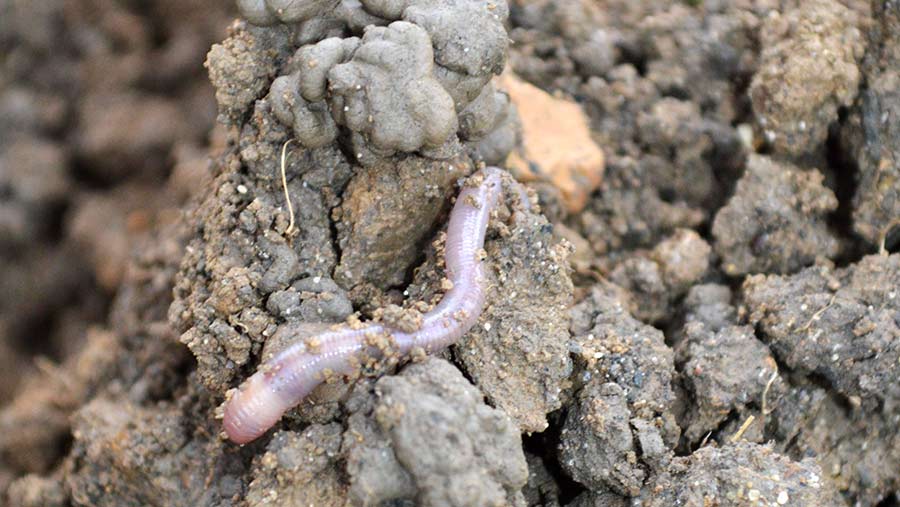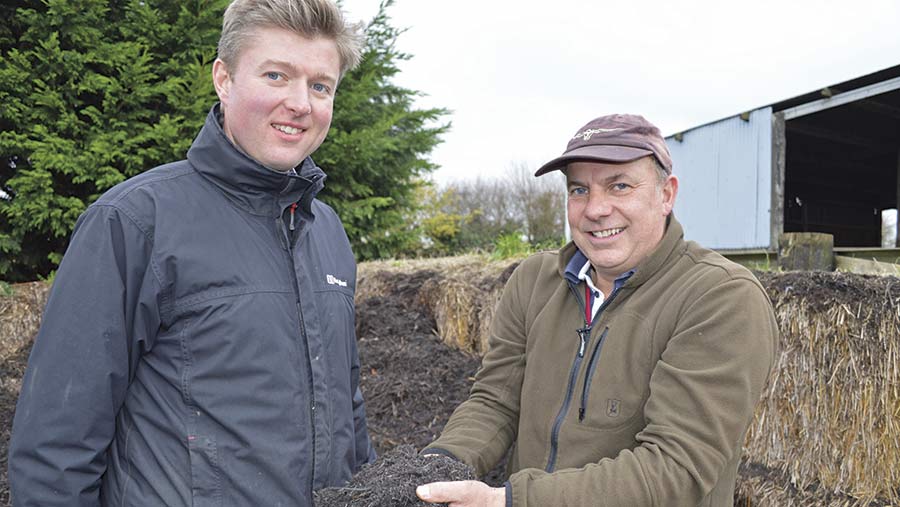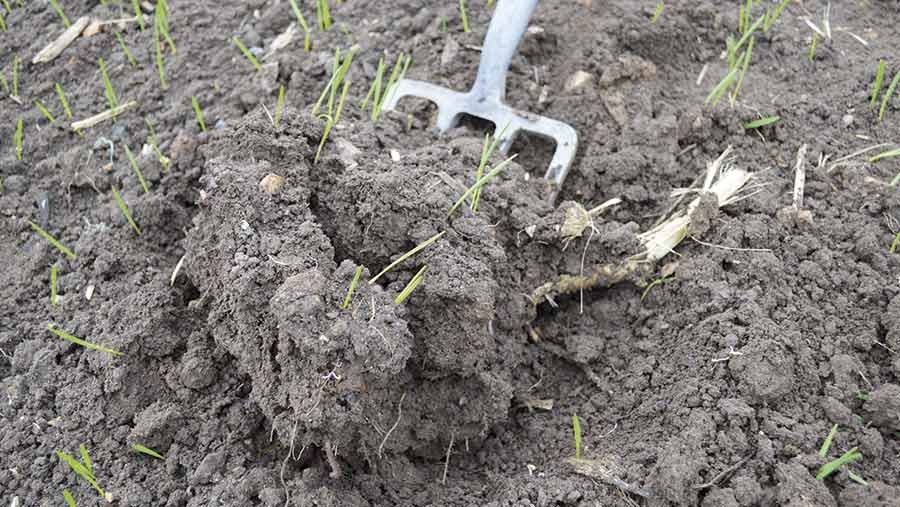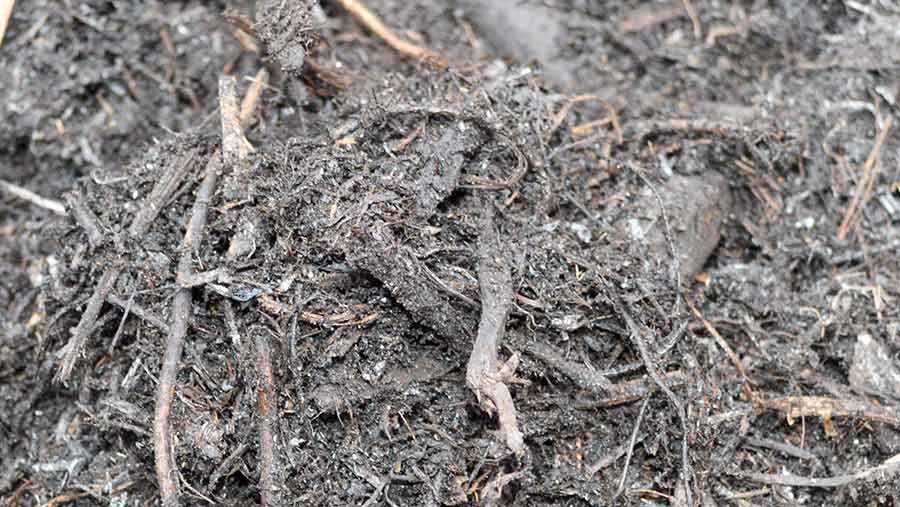Green compost lifts yields on Buckingham farm

Mark Humphrey’s use of green compost on his Buckinghamshire farm has resulted in bumper milling wheat and maize yields on his poor, hungry gravel soils.
Using council-collected garden waste for more than a decade has led to healthier soils with an increase in earthworms, and it also made his light land less drought prone in dry summers.
Wheat and maize yields have responded with breadmaking wheat varieties topping 10t/ha and maize averaging 38t/ha on his gravel land, once deemed only suitable for barley growing and sheep grazing.
See also: Tips on how to get your soils back in to better shape
In addition, his fertiliser bill has been slashed with no phosphate or potash used on the farm and nitrogen applications on his milling wheats cut by one-third, while fuel costs have shrunk as his land is much more workable.
“Our soils show better fertility, are easier to manage with improved workability leading to better seed-bed preparation,” he tells Farmers Weekly.

Greg Taylor and Mark Humphrey
His land running down to the River Ouse on the edge of Buckingham is now in much better heart than when he took over the farm in the 1990s, and it supports a 700-ewe flock as well as growing wheat and maize.
Diversification
The move into compost was prompted by a desire to diversify operations on his relatively modestly sized 100ha farm, improve his light gravel land and cut his hefty fertiliser bills.
The first green waste started to be delivered by Buckinghamshire council and local landscape gardeners in 2003, with a capacity on the farm to take 5,000t/year.
He admits getting into making compost was not plain sailing, as securing planning permission was not easy and a permit was required from the Environmental Agency, while care is needed to prevent compost odours wafting across to a nearby village.

Soil structure was improved after compost was used
Compost is delivered to his farm through the summer months when gardeners get busy cutting their lawns with a peak seen in April and May. It is unloaded on to a large hard-core area at his College Farm, Maids Moreton, on the northeastern edge of Buckingham.
The material is shredded and stockpiled in 250-300t heaps which are turned weekly over a six-week period to aid composting and prevent overheating, and finally put through a 28mm screen to produce useable material.
Nutrient-rich asset
The compost loses about one-third of its weight over the shredding and turning process to produce a valuable nutrient-rich fertiliser replacement, which he uses on his farm and some supplied to neighbours at a small price.
He spreads his compost in April at 20t/ha, working the material into the soil with tines and discs and then drills maize usually in the first week of May. The compost does not work instantaneously, but soaks up some nitrogen from the soil before really benefitting the maize crop, he adds.
The compost is calculated to contain 200kg/ha of nitrogen, but only 10% of it will be available in the first year, allowing him to cut a traditional 100kg/ha dose of nitrogen for his maize crop down to 80kg/ha.

It is reckoned that the compost compost is calculated contains 200kg/ha
His 35ha of maize, which supplies a local anaerobic digester plant, is followed by winter wheat drilling in late October, and he is able to cut his spring nitrogen use on his milling wheat down to just 200kg/ha.
“The compost is hugely beneficial in terms of saving on nitrogen for our wheats which generally meet the millers’ specification for protein,” he says.
Rule of thumb
His agronomist Greg Taylor of advisory group Agrii says as a rule of thumb wheat needs about 30kg/ha of nitrogen fertiliser to produce 1t of wheat to meet a 13% protein milling quality, so some 300kg/ha for a 10t/ha crop.
“The farm is generally producing 10t/ha at 13% protein using 200kg/ha of nitrogen on a soil type you would normally expect a 7-8t/ha yield. The compost has helped turn poor ground into profitable arable land,” says Mr Taylor.
Soil nitrogen testing takes place in February in the winter wheat to check on how the available nitrogen is developing and to fine-tune the exact levels of nitrogen fertiliser needed to hit the 13% protein milling wheat target.
Mr Taylor adds that the farm’s soils have seen better water retention through the summer and crops have a better standing ability due to good rooting while phosphate and potash soil indices are well above 2.
Variety switch
After three years of growing the milling wheat variety Cruseo, he has switched to the newer variety Zyatt in search of higher yields after a slightly disappointing year with Crusoe following a June heatwave which cut the yield down to 8.5t/ha.
Stubble turnips are drilled as soon as the wheat is harvested, usually in the first week of August, and the residual effect of the compost is enough to get the crop off to a good growth start in the autumn.
His strategy of three crops in two years – maize, wheat and stubble turnips – is now looking a useful rotation for the two-thirds of his farm in an arable rotation with the rest of the land in permanent pasture or grass leys for his Mule ewe flock.
The May-sown maize gives him an opportunity to spread compost in the spring on the grazed stubble turnips, which in turn give him green cover over the winter to soak up any nutrients in the soil and fatten all his lambs.
“I could not be a sheep farmer and look at stubbles all winter,” he says.
This rotation help him spread the workload on the farm with a routine of lambing in March, spreading compost in April and then drilling maize in May.
He concludes it is not an easy process getting all the clearances for using green compost on the farm, but it has fitting well into his system and had led to big improvement in the health and fertility of his soils.

